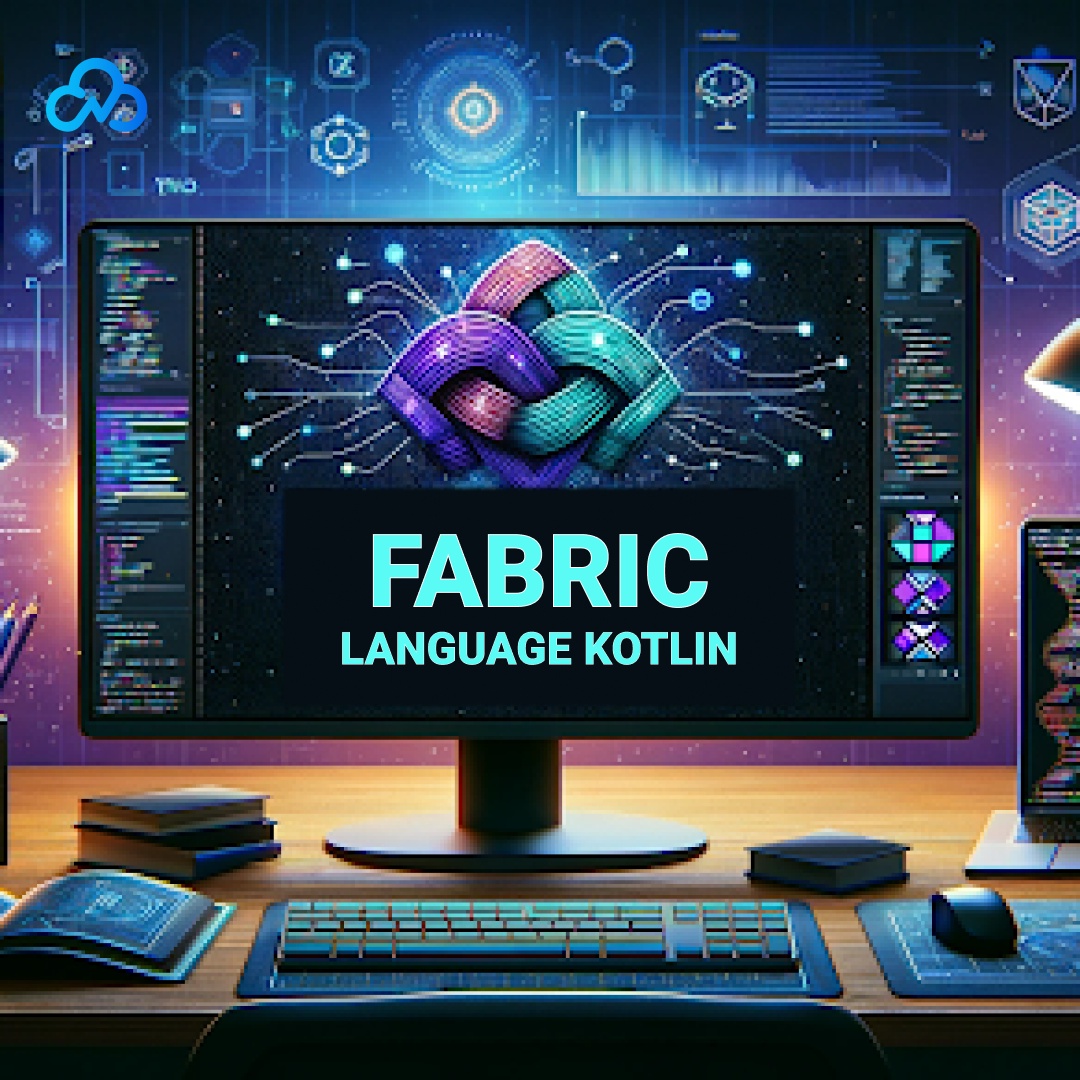In the vast world of Minecraft modding, the introduction of Fabric – a lightweight modding toolchain – has been a game changer. Among the various advancements it brought, one of the most notable is the support for Kotlin, a modern programming language known for its safety features and concise syntax. Fabric Language Kotlin (FLK) is not just a mod loader but an ecosystem that empowers developers to write Minecraft mods in Kotlin. This blog will explore the benefits of using Kotlin with Fabric, how to set up your development environment, and dive into creating a simple mod.
Why Kotlin for Minecraft Modding?
Minecraft modding has traditionally been dominated by Java, the language Minecraft is written in. However, Kotlin offers several advantages:
1. Concise Code: Kotlin significantly reduces boilerplate code, making your mod code more readable and maintainable.
2. Interoperability with Java: Kotlin is fully interoperable with Java. This means you can easily use Kotlin in your Fabric mods without worrying about compatibility.
3. Safety Features: Kotlin's design emphasizes null safety and immutability, which can lead to fewer crashes and more stable mods.
4. Modern Language Features: Features like extension functions, higher-order functions, and coroutines make Kotlin powerful and enjoyable to use.
Setting Up Your Development Environment
Before diving into mod development, you need to set up your development environment. Here's a step-by-step guide:
1. Install JDK: Ensure you have JDK 8 or newer installed, as it's required for Minecraft modding.
2. Set Up IntelliJ IDEA: While you can use other IDEs, IntelliJ IDEA has excellent support for Kotlin and integrates well with Gradle, which Fabric uses.
3. Install Fabric Mod Development Kit (MDK): Download the Fabric MDK from the [Fabric website](https://fabricmc.net/use/). This kit includes everything you need to get started with mod development.
4. Configure Your Project for Kotlin: After setting up the MDK in IntelliJ, you need to add Kotlin support. Modify your `build.gradle` file to include Kotlin dependencies:
plugins {
id 'fabric-loom' version '0.8-SNAPSHOT'
id 'org.jetbrains.kotlin.jvm' version '1.4.31'
}
repositories {
mavenCentral()
maven { url 'https://maven.fabricmc.net/' }
maven { url 'https://jitpack.io' }
}
dependencies {
// Specify your dependencies here
minecraft 'com.mojang:minecraft:1.16.5'
modImplementation 'net.fabricmc:fabric-api:0.34.1+1.16'
modImplementation "org.jetbrains.kotlin:kotlin-stdlib-jdk8"
}This setup is crucial for using Kotlin in your Fabric mods.
Continuing from the initial setup, let's explore how to create a simple mod using Fabric Language Kotlin and delve into some advanced modding concepts.
Creating Your First Kotlin Mod in Fabric
Now that your environment is set up, let’s create a basic mod. We'll make a simple mod that adds a custom item to the game.
1. Creating the Mod Main Class: In your `src/main/kotlin` directory, create a Kotlin file for your main mod class. Name it `MyMod.kt`. In this class, you will define a mod initializer.
package com.example.mymod
import net.fabricmc.api.ModInitializer
class MyMod : ModInitializer {
override fun onInitialize() {
// Mod initialization logic here
println("Hello from My Kotlin Mod!")
}
}2. Registering the Mod: To let Fabric know about your mod, add an entry in the `fabric.mod.json` file located in `src/main/resources`.
{
"schemaVersion": 1,
"id": "my_kotlin_mod",
"name": "My Kotlin Mod",
"version": "1.0.0",
"entrypoints": {
"main": [
"com.example.mymod.MyMod"
]
}
}3. Adding a Custom Item: Now, let’s add a custom item. Create a class `CustomItem.kt` in the same package.
package com.example.mymod
import net.minecraft.item.Item
import net.minecraft.item.ItemGroup
class CustomItem : Item(Item.Settings().group(ItemGroup.MISC)) {
// Add item-specific functionalities here
}Then, register this item in your mod initializer:
import net.minecraft.util.Identifier
import net.minecraft.util.registry.Registry
class MyMod : ModInitializer {
override fun onInitialize() {
val CUSTOM_ITEM = CustomItem()
Registry.register(Registry.ITEM, Identifier("mymod", "custom_item"), CUSTOM_ITEM)
}
}Leveraging Kotlin's Advanced Features in Modding
Kotlin's advanced features can be particularly beneficial in mod development:
1. Extension Functions: You can add new functions to existing Minecraft classes. This is useful for adding utility methods relevant to your mod.
2. Higher-Order Functions: These can be used for creating elegant, reusable code patterns, particularly in event handling.
3. Coroutines for Asynchronous Tasks: Kotlin’s coroutines are perfect for handling tasks that shouldn’t block the main game loop, like API calls.
Example of an extension function:
fun ItemGroup.addCustomTab(name: String, itemSupplier: () -> Item): ItemGroup {
// Custom logic to add a new item group/tab
}Best Practices for Kotlin Mod Development
When developing mods with Kotlin and Fabric, consider the following best practices:
1. Optimize Performance: Always be mindful of the impact your mod has on the game's performance. Avoid unnecessary computations, especially in render loops.
2. Follow Minecraft's Conventions: Align your mod's behavior with Minecraft's existing mechanics and UI/UX design for a seamless player experience.
3. Test Thoroughly: Minecraft mods can interact in unpredictable ways. Test your mod in isolation and alongside popular mods to ensure compatibility.
4. Keep Up with Updates: Minecraft is constantly evolving. Stay updated with the latest changes in the game and the Fabric toolchain.
Conclusion
Fabric Language Kotlin offers a modern and efficient way to develop Minecraft mods. The combination of Kotlin's powerful features and Fabric's lightweight modding capabilities creates an environment where creativity and functionality can thrive. Whether you're a seasoned modder or new to the scene, Kotlin and Fabric provide the tools you need to bring your ideas to life in the world of Minecraft.
For any it services, software development agency solutions visit our websites.


No comments yet